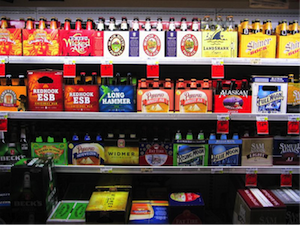
Shopper marketing is just over a decade old and for many retailers and manufacturers it’s becoming increasingly important. But shopper marketing remains poorly understood by many and as a result, many common myths abound. In this week’s blog and the next, I want to deal the four most common shopper marketing myths, and explore what’s really true, what shopper marketers need to know, and what de-bunking each of these myths means for the modern marketer.
Myth one: Consumers and shoppers are the same

False: I’m yet to work in a category where all the people who buy a product also use it. The proportion of a category sold to shoppers who are not consumers varies enormously from a very large percentage to a very low one. But even when the shopper and the consumer are the same physical being, the behaviors of consumption (drinking a product) and shopping (buying a product) are massively different.
Let’s take an example: I like to drink a cold beer after a game of rugby with my friends, personally. I prefer to drink a more ‘premium’ brand like Heineken over any old beer. These preferences, and the consumption they create, are born out of years of positive “post-rugby-cold-Heineken” experiences – I’m a “premium beer consumer”. Now let’s think about me as a shopper: every few weeks, it’s my turn to buy the beer for the team. Logic suggests I’ll buy Heineken, but when I stop to buy the beer on the way to training, I find another beer is on promotion and in the chiller in a large format pack. Since I’m buying for a bunch of guys, as long as the beer is not a brand I’d actively reject – I’ll buy the promotion to save money (I know – I’m a “cheapskate, deal-buying shopper”!).
Implication: Marketers who assume that activities that build brand equity in the mind of a consumer will automatically drive sales are often disappointed. Different consumption and shopping behaviors are driven by different stimuli – so they require different activities to deliver the required results. For campaigns to be really successful separate, and yet linked, consumer and shopper components are needed.
Myth two: Shopper marketing only happens in-store

False: We are always shopping – especially today when we interface with brands in so many different ways. In actual fact the process of shopping begins long before we go to a store – it starts with a consumption gap (you can read more on this in one of Mike Anthony’s recent blogs): he second I realize a product is absent from a regular cycle of consumption, I consider buying it, or I ask someone else to. At that moment the shopping process has begun and long before a shopper walks into the store, they first have to think about how urgent the trip is and which stores are most likely to ensure the trip is successful.
Let’s take an example: On the odd occasion I’m home to bath by one-year-old I notice we are down to our last “night-time” diaper. I mention this to my wife;now she has a choice: to wait until she does our regular shop or to send me around the corner to the local c-store. If it’s the latter two things will happen; firstly we will spend more per diaper (the C-store only has small packs and they are priced at a premium) and secondly we won’t use our preferred brand because the local C-store doesn’t stock it.
Implication: Marketers who believe that all that’s needed to deliver shopper behavior is a few well-sited displays or promotions in a key retail chain often get lower returns on their investment. Those who are able to prioritize shoppers and shopper missions are able to close sales faster, more easily and at less cost because they know how to lever their total marketing budget both outside and inside the store.
Next week I’ll deal with the next two myths that are most commonly associated with shopper marketing: that shopper marketing is just about large super-organized chain stores, and that it’s an evolution from trade marketing and category management. Find out the truth behind these myths, that all shopper marketers need to know by subscribing to my blog.